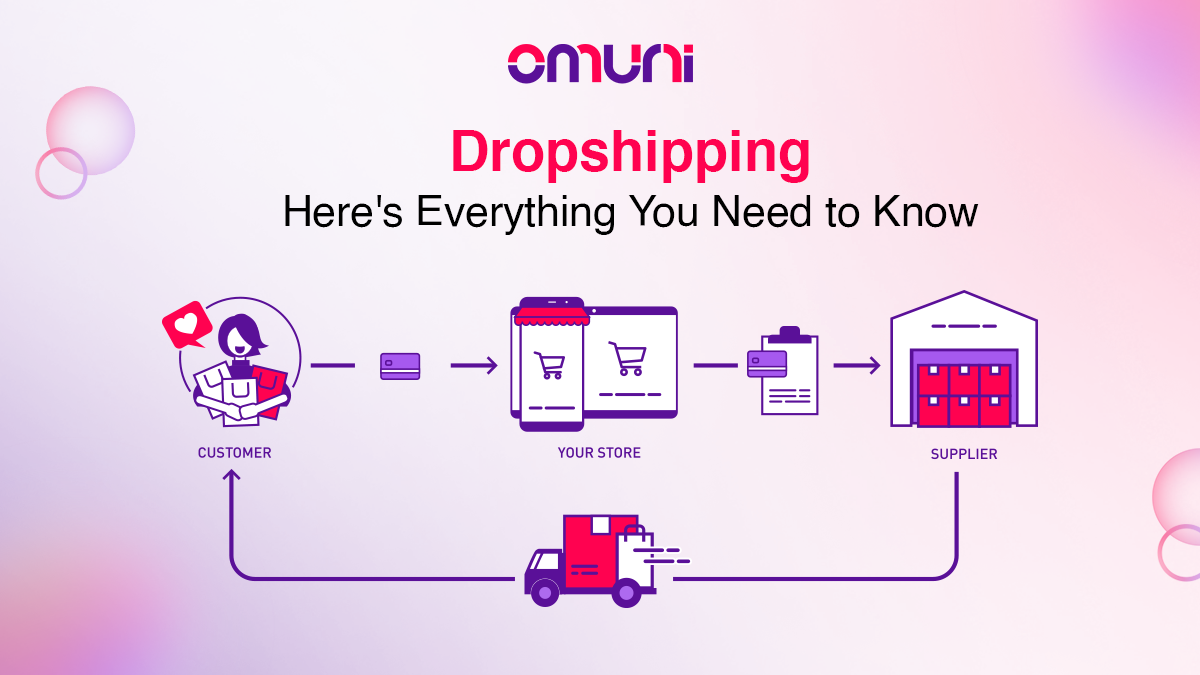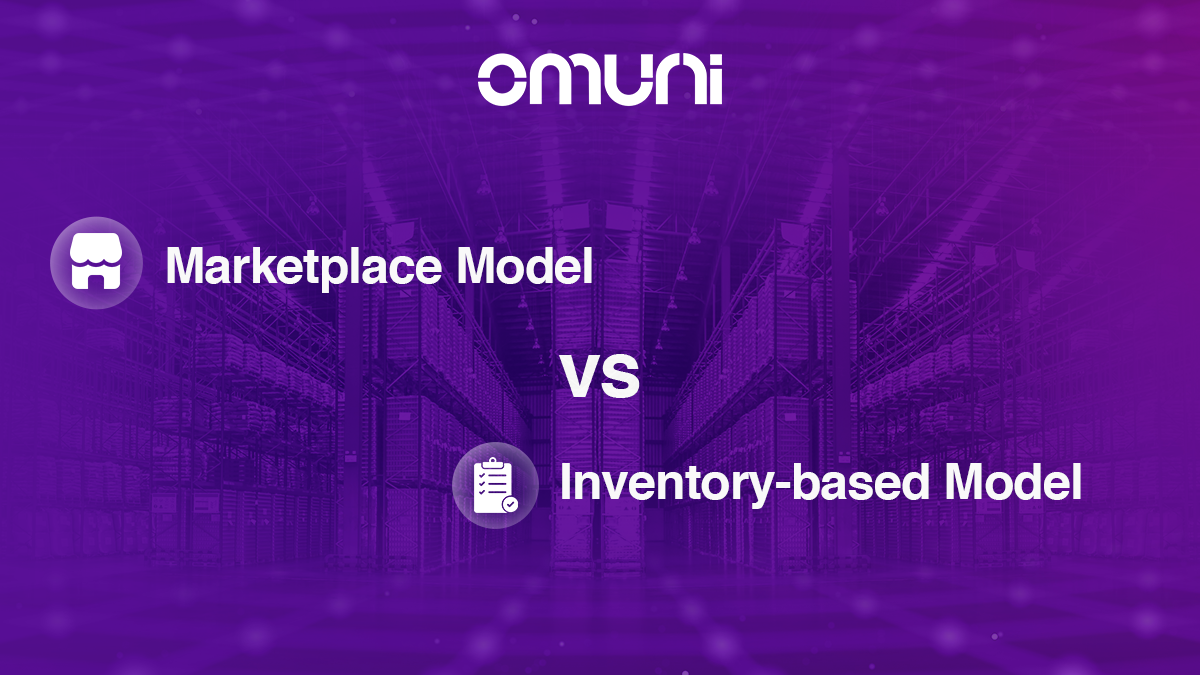Top 7 Omnichannel Strategies to Scale Your Business
- Key Takeaways
- Omnichannel Strategies to Deliver the Best Brand Experience
- #1- Omnification and Optimization of Inventory
- #2- Empower Offline Stores with Technology
- #3- Mapping the Customer Journey
- #4- Personalized Offers and Recommendations
- #5- Omnichannel Fulfillment and Delivery
- #6- Analyze the Data to Make Intelligent Business Decisions
- #7- Invest in the Right Technology Partner
- Conclusion
- FAQs (frequently asked questions)?
The nature of business is synonymous with scaling. It goes without saying that a great brand should think about scaling before investing resources in new strategies.
Going omnichannel has been a groundbreaking strategy that has helped brands scale better. According to a report, businesses implementing the right omnichannel strategy increase their revenue by 9.5%. Another report claims that businesses adopting omnichannel strategies gain 91% year-over-year customer retention rates.
However, not all brands are able to achieve the same success as they predicted or as their competitors may achieve. This is due to the fact that brands need to explore more on what strategies to implement, and just being present on all sales channels doesn’t help deliver a true omnichannel experience to their customers.
Key Takeaways
- An omnichannel strategy is where brands create their presence across offline and online channels to deliver a seamless shopping experience to their customers.
- An omnichannel strategy helps brands increase customer engagement, improve customer retention, decrease logistics costs, and gain revenue.
- A good omnichannel provider helps brands by providing the right technology, implementing strategies, managing the change, and analyzing the impact.

Omnichannel Strategies to Deliver the Best Brand Experience
The following strategies can help brands successfully implement omnichannel and avoid unnecessary complications in scaling their brand.
#1- Omnification and Optimization of Inventory
Unifying the inventory is the first step toward implementing an omnichannel strategy. No brand can make delivery commitments if they do not have visibility into its entire inventory.
According to a report, the average retailer has only 63% inventory accuracy, leading to wasted time and a lousy customer experience. This is because end-to-end inventory visibility and accuracy help brands prevent understocking and overstocking and streamline the fulfillment process.
Therefore, to optimize the inventory, the brand needs to determine where its inventory exists and connect all its network nodes onto a single platform. Inventory omnification enables brands to reduce operational costs, facilitate inventory forecasting, identify inventory leaks, enhance customer satisfaction, and more.
#2- Empower Offline Stores with Technology
Retail stores are the most crucial channel for both brands and customers. They are the most significant customer interaction point for any brand and play a massive role in building brand perception.
Today, brands need to transform their retail stores into experience centers and perform duties previously not under their umbrella. The easiest way to provide customers with a seamless shopping experience is to inculcate an omnichannel approach in their retail business and implement new strategies and technologies.
By arming retail stores with the latest technology, brands can eliminate the need to stockpile products, sell everything that the brand has to offer, fulfill online orders from stores, empower store staff to assist customers better, provide contactless checkout, deliver faster, and so much more.
#3- Mapping the Customer Journey
Creating a customer journey map helps brands understand the customer’s experience while shopping with them. Customer journey mapping considers interactions before, during, and after buying the product and helps identify barriers to delivering the best customer experience.
The customer journey map takes into account the customers’ persona, realizes customer buying stages, analyzes the interaction touchpoints, and considers customers’ thoughts and actions.
The purpose of creating a customer journey map is to look for new opportunities to remove pain points and improve the overall buying journey for customers.
#4- Personalized Offers and Recommendations
Delivering personalized experiences across offline and online channels is becoming the next big marketing opportunity. According to a report by Mckinsey, omnichannel personalization can increase revenue by 5-15% across the full customer base.
Customers feel like they have a bigger say in the business when they get personalized recommendations and offers based on their likes, shopping habits, and what they have bought earlier. Examples of personalized experiences include delivering individualized product recommendations, in-store promotions, and one-to-one messages.
#5- Omnichannel Fulfillment and Delivery
Omnichannel fulfillment is a strategy where brands use multiple channels to fulfill customers’ orders and deliver them quickly. According to a report, 66% of customers believe that providing multiple fulfillment options increases their willingness to complete their buying journey.
Omnichannel fulfillment allows for easy management of orders and enables brands to provide multiple delivery options to their customers like BOPIS (buy online pickup from store), BOSS (buy online ship from store), BORIS (buy online return to store), SDD (same-day) and NDD (next day delivery), hyperlocal, etc.
#6- Analyze the Data to Make Intelligent Business Decisions
A data-centric strategy enables brands to learn more about their business and their customers’ interests. It keeps the guesswork out of the process and gives a better understanding of customer demographics, the current state of the business, how investments should be made, how to find new opportunities, and how to respond quickly to new trends.
Analyzing customers’ data allows brands to make better product features, advertising campaigns, and customer service choices to increase their return on investment.
#7- Invest in the Right Technology Partner
Choosing the right omnichannel provider is the one key strategy on which brands should focus.
The right omnichannel provider can help implement all the above strategies with minimal effort required from the brand and can positively or negatively impact the overall value chain and customer experience.
Brands should look out for omnichannel providers with prior experience who can help brands with their existing tech stack, on-ground change management, and maximize their ROI in the shortest possible time.
As India’s largest and most preferred omnichannel platform, Omuni provides innovative and easy-to-integrate solutions for stores, websites, social platforms, and marketplaces. Omuni is powering 100+ global brands across 10,000+ stores, covering multiple categories like fashion and lifestyle, electronics, footwear, FMCG, pharmacy, home & furnishings, etc.
Conclusion
Today, customers expect personalized and seamless shopping experiences from any brand. An omnichannel strategy is where brands create their presence across offline and online channels to deliver a seamless shopping experience to their customers.
By embracing the above-mentioned omnichannel strategies, businesses can improve customer engagement, increase sales and revenue, and stay ahead of the competition.
FAQs (frequently asked questions)?
An omnichannel retail strategy means selling wherever your customers buy, like on an e-commerce website, in-store, third-party marketplaces, chatbots, or social media.
The first step in developing an omnichannel strategy is determining which channels your customers prefer the most. Then, develop strategies for those channels so that your customers can make purchases through any of them.
Single channel: A brand that sells its products through a single channel, like a retail store.
Multi-channel: A brand that sells its products through multiple channels like marketplaces, e-commerce websites, brick-and-mortar stores, etc.
Omnichannel: A brand that delivers seamless shopping across all of its channels, including brick-and-mortar stores, e-commerce websites, marketplaces, mobile apps, etc.



